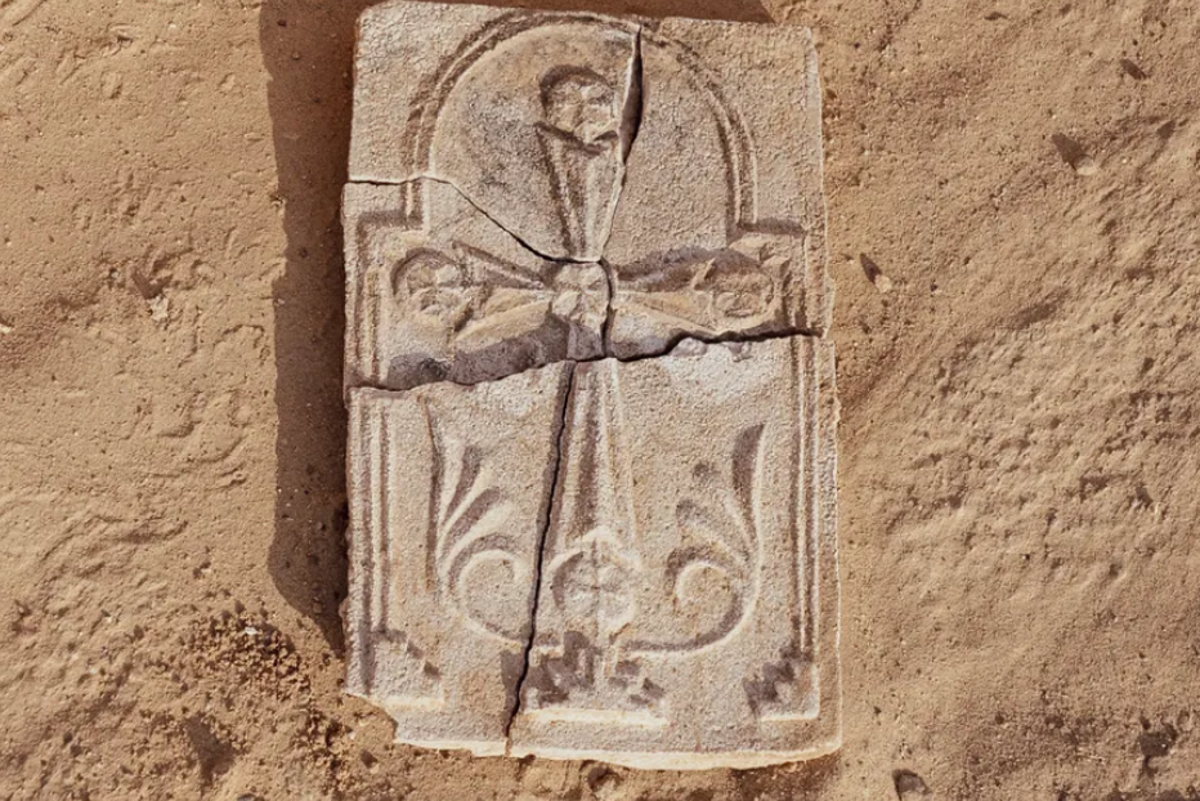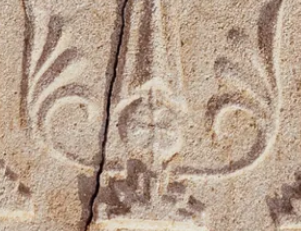
Archaeologists have uncovered a 1,400 year-old Christian cross on a plaque at an ancient monastery on the Emirati island of Sir Bani Yas.
The cross incorporates regional motifs, including a stepped pyramid representing Golgotha, where Christians believe Jesus was crucified, and leaves sprouting from its base.
Measuring 27cm long, 17cm wide, and 2cm thick, it is larger and more detailed than a cross found in the 1990s that first identified the location as a Christian site, according to The National.
It was moulded onto a plaque thought to have been used by monks for spiritual contemplation and shows similarities with finds in Iraq and Kuwait and to the Church of the East. The Church of the East, which Christians formed part of, stretched from the Middle East to China.

Christianity is thought to have spread and later declined in the Arabian Peninsula between the fourth and sixth centuries, with Islam and Christianity co-existing until the monastery’s abandonment in the eighth century.
“We had settlements of Christians that were not just existing but were clearly flourishing,” lead archaeologist Maria Gajewska told The National. “This was just lying there telling us, yes, they were Christian.”
The “extremely exciting find” is a rare marker of who lived there, Ms Gajewska added.
The discovery comes during the first major excavation on the island in more than 30 years.
The seventh-to eighth-century monastery was first discovered in 1992, revealing a church and monastic complex. Theories vary on its use, from housing senior monks to serving as a retreat for wealthy Christians seeking seclusion and prayer by lamplight.

Archaeologists are now exploring nearby courtyard houses to better understand the lives of early Christian monks on the island.
“The discovery of this ancient Christian cross on Sir Bani Yas Island is a powerful testament to the UAE’s profound and enduring values of coexistence and cultural openness," Mohamed Khalifa Al Mubarak, chairman of the Abu Dhabi department, said.
“It stirs within us a deep sense of pride and honour and reminds us that peaceful coexistence is not a modern construct but a principle woven into the very fabric of our region’s history.”
Sir Bani Yas, about 170km south-west of Abu Dhabi, forms part of a network of contemporaneous churches and monasteries across the Gulf, including sites in Kuwait, Iran, and Saudi Arabia.
Today, the monastery and church sit within a nature reserve, home to gazelles and hyrax, offering a glimpse into Abu Dhabi’s ancient past.
Restoration efforts in 2019 introduced protective shelters, visitor signage, and a small exhibition featuring artefacts such as glass chalices and a scorpion-stamped seal.
Trump's federal law-enforcement crackdown ripples through DC neighborhoods
The suspect in a car-ramming attack on a German Christmas market is charged with murder
Kate Forbes not banned from Summerhall building, venue says
Israel to call up 60,000 reservists ahead of Gaza City move
Row between Israel and Australia descends into personal insults
Qatar urges progress on Gaza ceasefire after ‘positive response’ from Hamas







